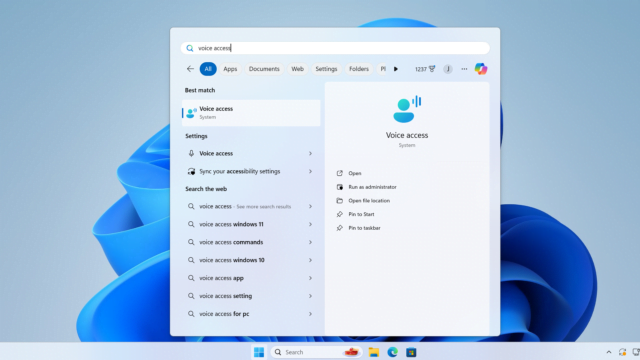
Windows 11 is making significant strides in accessibility and ease of use with the introduction of Voice Access, a powerful tool that enables users to control their PCs and create text using voice commands. This update marks a pivotal shift from the traditional Windows Speech Recognition (WSR) to a more advanced, on-device speech recognition system that operates without the need for an internet connection.
Key Highlights:
- Voice Access allows for seamless control of PCs, including opening apps, browsing the web, and managing emails, purely through voice commands.
- It supports a wide range of commands for navigating and interacting with the computer, enhancing accessibility for individuals with mobility disabilities.
- Windows 11 versions 22H2 and later will exclusively feature Voice Access, with WSR being phased out starting September 2024.
- The update introduces custom voice shortcuts, extended language support, and improved multi-display functionality.
- Voice Access is now available in additional languages including German, Spanish, French, and more, catering to a global audience.
- Integration with Narrator, Windows’ screen-reading tool, for dictating text and executing commands.
In-Depth Analysis
Voice Access: A Leap Forward in Speech Recognition
Windows 11’s Voice Access signifies a significant technological leap, offering a modern on-device speech recognition system that ensures accuracy and reliability even without an internet connection. This advancement is particularly beneficial for individuals with mobility disabilities, allowing for unprecedented control over their computing experience using voice commands.
Expanding Language Support and Customization
With the introduction of additional language support and the ability to create custom voice shortcuts, Voice Access is poised to cater to a diverse, global user base. The feature’s expansion to include German, Spanish, and French, among others, alongside English, demonstrates Microsoft’s commitment to inclusivity and accessibility.
Enhanced Multi-Display and Narrator Integration
The update also brings enhanced support for multi-display setups, allowing users to use voice commands across multiple screens efficiently. Integration with Windows Narrator enhances the accessibility features of Windows 11, enabling users to dictate text and navigate through commands seamlessly.
Deprecating Windows Speech Recognition
The shift towards Voice Access involves phasing out the older Windows Speech Recognition feature, a change that underscores the evolution of speech recognition technology since its inception with Windows Vista. This transition reflects Microsoft’s focus on enhancing user experience and accessibility through technological advancements.
Windows 11’s Voice Access represents a significant step forward in making computing more accessible and user-friendly. By leveraging advanced speech recognition technology, Microsoft is paving the way for a future where everyone, regardless of their physical abilities, can navigate and control their PC with ease.








